日本の着物を代表する伝統工芸「友禅染」。その名を耳にしたことがある方は多いでしょう。しかし、その二大産地である「京友禅」と「加賀友禅」の違いを明確に説明できる人は意外と少ないかもしれません。洗練された都の美意識が生んだ京友禅と、武家文化の精神性を映す加賀友禅。両者は同じ「友禅」の名を冠しながら、その歴史、意匠、そして技法において、対照的とさえ言える独自の世界観を築き上げてきました。
- 美意識の根源: 公家文化の「様式美」を追求する京友禅と、武家文化の「写実美」にこだわる加賀友禅。
- 色彩の哲学: 多色を用い金銀で華やぎを添える京友禅に対し、「加賀五彩」という落ち着いた基調色で自然を描く加賀友禅。
- 技法の決定的な差: 刺繍や金彩といった加飾を許容し総合美を創出する京友禅と、染色のみで絵画的表現を追求する加賀友禅。
友禅染の源流と二つの華
物語の始まりは、江戸時代中期の京都にまで遡ります。当時、人気を博していた扇絵師、宮崎友禅斎(みやざきゆうぜんさい)。彼が扇に描いていた絵柄を着物の模様染めに応用したことが「友禅染」の起源とされています。糊で防染し、多彩な色を自由に筆で描き分けるこの画期的な技法は、たちまち人々の心を掴みました。
この友禅染の技法が、京都の地で磨かれ洗練されたものが「京友禅」です。一方、その技法が加賀百万石の城下町・金沢に伝わり、独自の美意識のもとで発展を遂げたのが「加賀友禅」となります。同じ源流から出発しながら、二つの土地の文化や風土が、それぞれの友禅を全く異なる方向へと進化させたのです。
雅の極み、京友禅の世界
京友禅の背景にあるのは、天皇のお膝元として長く日本の文化の中心であった京都の公家文化や町人文化です。その特徴は、一言でいえば「豪華絢爛」そして「はんなり」とした雅な美しさにあります。
デザインは、花鳥風月といった自然のモチーフであっても、写実的に描くというよりは、図案化・文様化された「様式美」が重視されます。御所車や扇といった古典的な器物文様が取り入れられることも多く、非常に装飾的です。
色彩は、多くの色を使い分け、華やかで明るい色調が基本です。さらに、京友禅の美を決定づけるのが、金彩(金箔や金粉)や刺繍といった加飾の技法。染め上げた布地の上から、金や銀の輝き、刺繍の立体感が加えられることで、他に類を見ない華やかさと重厚感が生まれるのです。これは、図案から染色、金彩、刺繍まで、各工程を専門の職人が担う「分業制」によって支えられています。
武家の写実、加賀友禅の力強さ
一方、加賀友禅は加賀藩・前田家の武家文化の中で育まれました。質実剛健を重んじる武家の気風を反映し、その美意識は京友禅とは対極にあります。加賀友禅の特徴は、徹底した「写実主義」です。
描かれるのは、草花や鳥、風景といった自然の姿。それらをまるで絵画のように、ありのままに捉えようとします。この写実性を際立たせるのが、独特の技法です。「外ぼかし」と呼ばれる、模様の外側から内側に向かって色をぼかしていく技法は、対象に立体感と生命感を与えます。また、あえて虫に食われた葉を描く「虫食い」という表現は、自然の厳しさやありのままの姿を美しいと捉える、加賀友禅ならではの美学の現れです。
色彩の基調となるのは「加賀五彩」と呼ばれる、臙脂(えんじ)・藍・黄土・草・古代紫の五色。全体的に落ち着いた渋みのある色調が、写実的な表現に深みをもたらします。そして最も大きな違いは、加賀友禅は刺繍や金彩を一切用いないこと。染めの技術のみで、その世界観を完結させる潔さが、加賀友禅の力強さの源泉となっています。製作工程のほとんどを作家一人が担うため、作り手の個性が色濃く反映されるのも特徴です。
それぞれの美、現代へ
京友禅と加賀友禅、その違いをまとめると以下のようになります。
| 特徴 | 京友禅 | 加賀友禅 |
| 背景文化 | 公家・町人文化 | 武家文化 |
| デザイン | 図案的・様式美 | 絵画的・写実美 |
| 色彩 | 多彩・華やか | 加賀五彩を基調とした落ち着いた色調 |
| 技法 | 刺繍・金彩など加飾を多用 | 染色のみ。外ぼかし、虫食いなど |
| 制作体制 | 分業制 | 作家による一貫制作が主 |
どちらが優れているということではなく、それぞれの土地の歴史と文化が育んだ、独自の美の結晶が京友禅と加賀友禅です。その伝統は現代にも受け継がれ、今なお多くの人々を魅了し続けています。
解説ポイント①:美意識の根源: 公家文化の「様式美」を追求する京友禅と、武家文化の「写実美」にこだわる加賀友禅
この美意識の違いは、文様の描かれ方に最も顕著に現れます。例えば、同じ「桜」をテーマにしても、京友禅では桜の花や枝をパターン化し、他の文様(例えば流水や扇)と組み合わせて構成的な美しさを創り出します。これはデザイン化された「図案」であり、装飾性が高いのが特徴です。一方、加賀友禅では、一本の桜の木がそこにあるかのように、枝ぶりや花の付き方、光の当たり方までを写し取ろうとします。こちらは写実性を重んじた「絵画」に近い表現と言えるでしょう。この背景には、優美さや雅を重んじた京都の公家文化と、質実剛健で現実的な価値観を大切にした加賀の武家文化という、それぞれの社会の価値観が深く関わっています。
解説ポイント②:色彩の哲学: 多色を用い金銀で華やぎを添える京友禅に対し、「加賀五彩」という落ち着いた基調色で自然を描く加賀友禅
京友禅の華やかな色使いは、まさに都の賑わいや洗練を映し出しています。赤やピンク、紫、緑など、中間色を含めた豊富な色数が用いられ、それらが金銀の輝きと合わさることで豪華な印象を生み出します。一方、加賀友禅の基調色である「加賀五彩(臙脂、藍、黄土、草、古代紫)」は、百万石の武家らしい落ち着きと気品を感じさせます。これらの色は、北陸の曇りがちな空の下でも美しく映えるように考えられたとも言われ、自然の風景に溶け込むような深みと渋みを持っています。この色彩哲学の違いが、京友禅の「ハレの日の華やかさ」と、加賀友禅の「奥ゆかしい品格」という、それぞれの着物が持つ印象を決定づけているのです。
解説ポイント③:技法の決定的な差: 刺繍や金彩といった加飾を許容し総合美を創出する京友禅と、染色のみで絵画的表現を追求する加賀友禅
京友禅では、染めはあくまで美を構成する一要素であり、刺繍や金彩(金箔)といった他の技術と組み合わせることで、総合的な豪華さを演出します。これは各工程の専門家が技を競い合う分業制だからこそ可能な、いわば「総合芸術」です。それに対して加賀友禅は、染色の技術だけでどこまで写実的に、絵画的に表現できるかを追求します。特に、模様の輪郭を外側から内側へ向かってぼかしていく「外ぼかし」は、写実的な表現に欠かせない技法で、花びらの柔らかさや葉の丸みを表現し、立体感を生み出します。また、あえて傷んだ葉を描く「虫喰い」は、完璧な美しさだけでなく、自然のありのままの姿を愛でるという、加賀友禅独特の自然観を象徴する技法と言えます。これらの技法は、刺繍や金彩に頼らずとも、染めだけで高い芸術性を確立しようとする職人の誇りとこだわりを示しています。
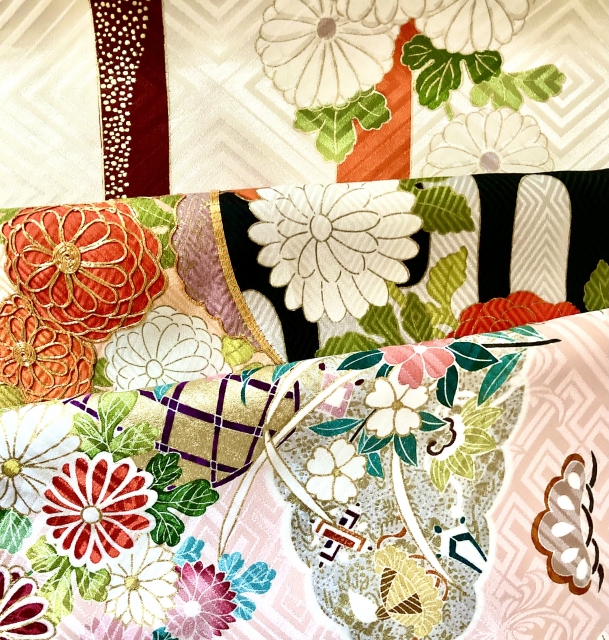
参考文献
- 京友禅(きょうゆうぜん)の特徴 や歴史 – KOGEI JAPAN(コウゲイジャパン)
- History and Features of Kaga-Yuzen Dyeing – 加賀友禅
- 加賀友禅と京友禅 – ちんがらや
- 着物の種類 加賀友禅、京友禅の違いとは? – きもの売却専門 oldnew
- Kaga Yuzen: Traditional Art on Kimono | Japan’s Local Treasures | Travel Japan (JNTO)
- 加賀友禅の出来るまで – 加賀友禅の老舗 白坂
【English Article】
Kyo-Yuzen vs. Kaga-Yuzen: A Tale of Two Cities in Japanese Kimono Art
“Yuzen,” a celebrated traditional craft representing Japanese kimono, is a term many have likely heard. However, few can clearly explain the differences between its two major production centers: “Kyo-Yuzen” from Kyoto and “Kaga-Yuzen” from Kanazawa. While both share the name “Yuzen,” Kyo-Yuzen, born from the sophisticated aesthetics of the ancient capital, and Kaga-Yuzen, reflecting the spirit of samurai culture, have cultivated contrasting worldviews in their history, design, and techniques.
- Roots of Aesthetic Sense: Kyo-Yuzen pursues the “stylized beauty” of court culture, while Kaga-Yuzen is dedicated to the “realistic beauty” of warrior culture.
- Philosophy of Color: Kyo-Yuzen uses a multitude of vibrant colors enhanced with gold and silver, whereas Kaga-Yuzen depicts nature with the calm, foundational “Kaga Gosai” (Five Kaga Colors).
- The Decisive Difference in Technique: Kyo-Yuzen creates a composite beauty by incorporating embellishments like embroidery and gold leaf, while Kaga-Yuzen pursues pictorial expression through dyeing alone.
The Origin of Yuzen and Its Two Flourishing Branches
The story begins in the mid-Edo period in Kyoto with a popular fan painter named Miyazaki Yuzensai. The “Yuzen” dyeing technique is said to have originated when he applied the designs he painted on fans to kimono dyeing. This revolutionary method, which used paste to prevent colors from mixing and allowed for freehand painting with a rich palette, instantly captured the hearts of the people.
The technique, refined and perfected in the city of Kyoto, became known as “Kyo-Yuzen.” Meanwhile, this same technique was introduced to Kanazawa, the castle town of the prosperous Kaga Domain, where it evolved under a unique aesthetic to become “Kaga-Yuzen.” Starting from the same origin, the culture and climate of these two cities guided their respective Yuzen traditions in entirely different directions.
The Pinnacle of Elegance: The World of Kyo-Yuzen
The backdrop of Kyo-Yuzen is the courtly and merchant culture of Kyoto, which long served as the cultural heart of Japan under the Emperor. Its characteristics can be summarized as “gorgeous and splendid,” embodying a refined and graceful beauty known as “hannari.”
The designs, even when featuring natural motifs like flowers and birds, emphasize a “stylized beauty” through schematized and patterned representations rather than realistic depictions. Classic motifs of courtly items like ox carriages and fans are often incorporated, making the designs highly decorative.
The color palette is vibrant and bright, utilizing a wide range of hues. Furthermore, the defining beauty of Kyo-Yuzen comes from decorative techniques such as kinsai (gold leaf and powder) and embroidery. The application of gold and silver brilliance and the three-dimensional texture of embroidery onto the dyed fabric create an unparalleled splendor and depth. This is supported by a “division of labor” system, where each stage—from design and dyeing to gold leaf application and embroidery—is handled by a specialized artisan.
The Realism of the Samurai: The Strength of Kaga-Yuzen
In contrast, Kaga-Yuzen was nurtured within the samurai culture of the Kaga Domain, ruled by the Maeda clan. Reflecting the samurai spirit that valued simplicity and fortitude, its aesthetic is the antithesis of Kyo-Yuzen. The hallmark of Kaga-Yuzen is its thorough “realism.”
It depicts natural subjects such as plants, birds, and landscapes as if they were paintings, aiming to capture them as they are. This realism is enhanced by unique techniques. The “Sotobokashi” technique, a gradation method that shades colors from the outside of a pattern inward, imparts a sense of three-dimensionality and life to the subjects. The “Mushikui” (bug-eaten leaves) expression, which intentionally depicts insect-bitten leaves, reflects a unique Kaga aesthetic that finds beauty in nature’s unadorned and sometimes harsh reality.
The foundational colors are the “Kaga Gosai” (Five Kaga Colors): crimson, indigo, ocher, grass green, and ancient purple. The overall subdued and deep color palette lends profundity to the realistic depictions. The most significant difference is that Kaga-Yuzen uses no embroidery or gold leaf. Its strength lies in its integrity, completing its worldview through dyeing techniques alone. As most of the production process is handled by a single artist, the creator’s individuality is strongly reflected in the final work.
Respective Beauties, Enduring to this Day
To summarize the differences between Kyo-Yuzen and Kaga-Yuzen:
| Feature | Kyo-Yuzen | Kaga-Yuzen |
| Cultural Background | Court (Kuge) & Merchant Culture | Samurai (Buke) Culture |
| Design | Stylized & Decorative | Pictorial & Realistic |
| Colors | Multi-colored & Vibrant | Subdued tones based on Kaga Gosai |
| Techniques | Employs embroidery, gold leaf, etc. | Dyeing only; Sotobokashi, Mushikui |
| Production System | Division of Labor | Primarily by a single artist |
Neither is superior; each is a unique crystal of beauty nurtured by the history and culture of its land. These traditions have been passed down to the present day and continue to captivate many people.
Analysis Point ①: Roots of Aesthetic Sense: Kyo-Yuzen’s “stylized beauty” of court culture vs. Kaga-Yuzen’s “realistic beauty” of warrior culture
This difference in aesthetics is most evident in how motifs are depicted. For example, with the theme of “cherry blossoms,” Kyo-Yuzen would pattern the flowers and branches, creating a compositional beauty by combining them with other motifs like flowing water or fans. This is a stylized “design” with high decorative value. In contrast, Kaga-Yuzen attempts to capture a single cherry tree as if it were truly there, depicting the shape of its branches, the way the flowers bloom, and even how the light hits them. This is an expression closer to a “painting” that values realism. This difference is deeply rooted in the societal values of their respective origins: the court culture of Kyoto, which prized elegance and grace, and the samurai culture of Kaga, which valued fortitude and a pragmatic worldview.
Analysis Point ②: Philosophy of Color: Kyo-Yuzen’s vibrant palette with gold and silver vs. Kaga-Yuzen’s nature scenes in calm “Kaga Gosai”
The brilliant colors of Kyo-Yuzen reflect the vibrancy and sophistication of the capital. A rich array of colors, including reds, pinks, purples, and greens, along with various intermediate shades, are used. When combined with the glitter of gold and silver, they create a luxurious impression. On the other hand, the foundational “Kaga Gosai” (crimson, indigo, ocher, grass green, and ancient purple) of Kaga-Yuzen exude the calm and dignity befitting the samurai class. It is said that these colors were chosen to look beautiful even under the often-overcast skies of the Hokuriku region, possessing a depth and sobriety that blends with natural landscapes. This difference in color philosophy defines the impression each kimono gives: the “festive splendor” of Kyo-Yuzen and the “understated elegance” of Kaga-Yuzen.
Analysis Point ③: The Decisive Difference in Technique: Kyo-Yuzen’s composite beauty with embellishments vs. Kaga-Yuzen’s pictorial pursuit with dye alone
In Kyo-Yuzen, dyeing is one element of a larger composition. It is combined with other techniques like embroidery and kinsai (gold leaf) to produce a comprehensive sense of luxury. This “composite art” is made possible by a division-of-labor system where specialists in each field compete to showcase their skills. In contrast, Kaga-Yuzen pursues the limits of pictorial expression through dyeing techniques alone. The “Sotobokashi” technique, which gradates color from the outside of a pattern inward, is essential for creating realism, expressing the softness of petals or the roundness of leaves to generate a three-dimensional effect. Furthermore, the “Mushikui” (bug-eaten) detail, which deliberately depicts damaged leaves, symbolizes a unique view of nature in Kaga-Yuzen—one that appreciates the unadorned reality of nature, not just its perfect beauty. These techniques demonstrate the pride and dedication of the artisans to establish a high level of artistry through dyeing alone, without relying on embroidery or gold leaf.
References
- Kyo-yuzen (Kyoto-style Yuzen dyeing) – KOGEI JAPAN
- History and Features of Kaga-Yuzen Dyeing – Kaga-Yuzen
- Kaga Yuzen to Kyo Yuzen – Chingaraya (Japanese)
- Kimono no Shurui: Kaga Yuzen, Kyo Yuzen no Chigai towa? – Kimono Urukyaku Senmon oldnew (Japanese)
- Kaga Yuzen: Traditional Art on Kimono | Japan’s Local Treasures | Travel Japan (JNTO)
- The Making of Kaga Yuzen – Shiraki Sensho, an established Kaga Yuzen house


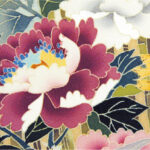
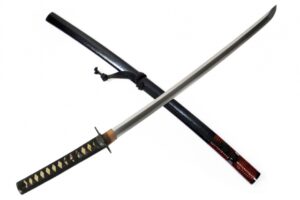
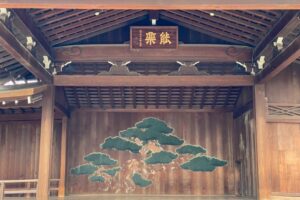
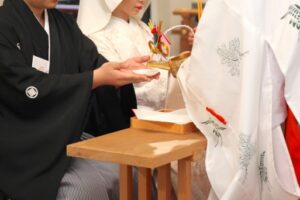
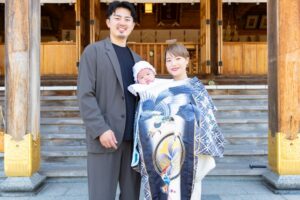


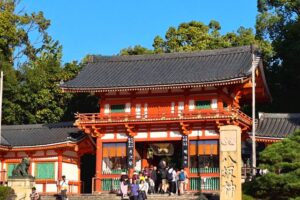
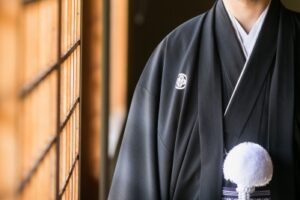
コメントを残す